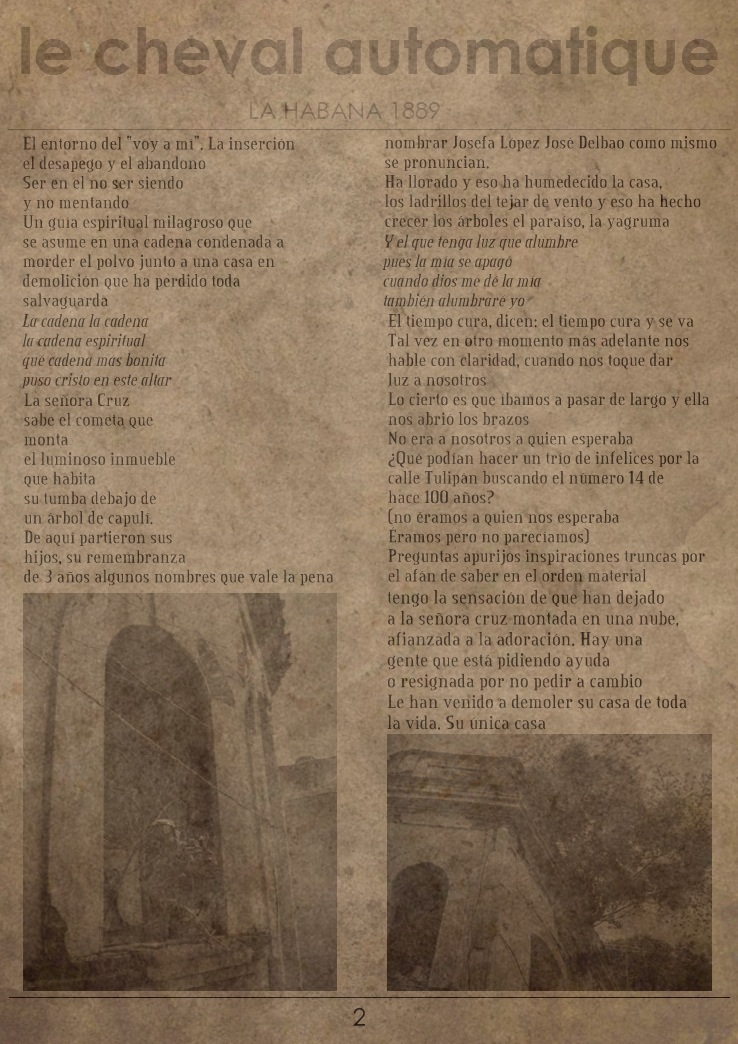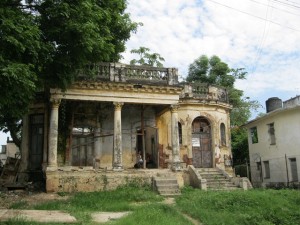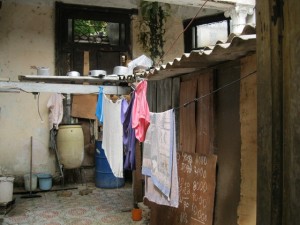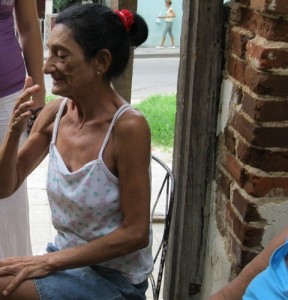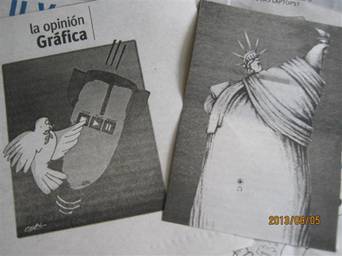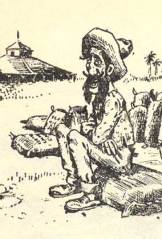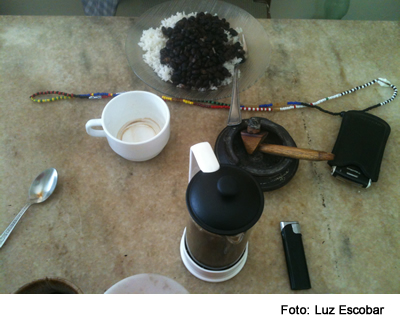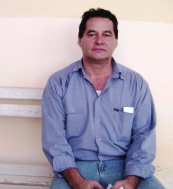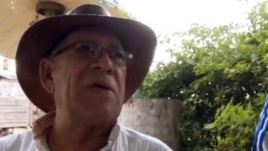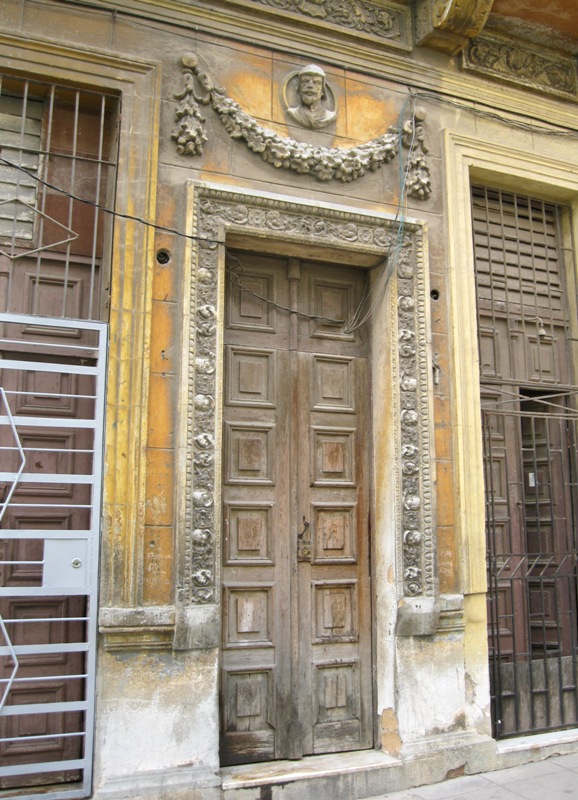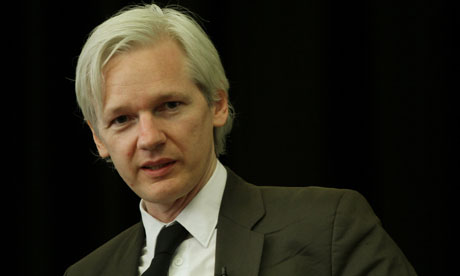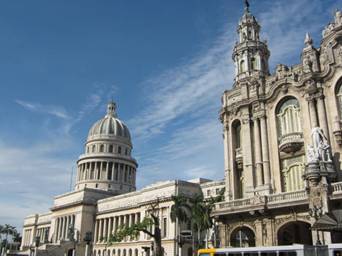 A brief summary of topics that describe the situation of Cuba in late 2013 could be summed up in two words: reform and repression.
A brief summary of topics that describe the situation of Cuba in late 2013 could be summed up in two words: reform and repression.
The reforms have been directed mostly in the right direction, but in a superficial way and excessively slowly. In addition to trying to alleviate an economic situation caused by years of volunteerism and contempt for the most basic economic laws, the reforms try to formalize the assignment of minimum space to entrepreneurs who were already earning from the illegal activities, perhaps so that they don’t feel incentives to leave the country or join the opposition.
The repression has been characterized by increased brief and arbitrary arrests and systematic maintenance of the acts of repudiation in which a portion of the population is driven by pressures and incentives to attack and insult to other citizens who peacefully express their disagreement with government policy. This undoubtedly constitutes incitement to commit acts that qualify as hate crimes. One of the objectives of repression is to isolate and terrorize malcontents who have not yet dared to cross the fuzzy line between loyalty and opposition.
A Reform to Delay “The Change” and Encourage Entrepreneurs
The list of the substantive reforms implemented by President Raul Castro since he formally took over the country in early 2008 is well-known:
Access to cell phone, permission to stay in hotels, buying and selling of cars and houses, expanding the list of jobs allowed to the self-employed, expanding the leasing of land under the concept of usufruct, the abolition of the exit permit and the concept of Final Exit, opening the Nauta network for connecting to the Internet, the so-called non-agricultural cooperatives, the ability to hire labor, the tacit acceptance of professionalism in sports, and other measures of greater or lesser importance. All of this could raise a wave of optimism to make people believe that the changes could ultimately anticipate The Change.
The limit that hampers this platform of changes is that it doesn’t touch the essentials. By not explicitly accepting private ownership of the means of production, nor merchant activity in the broadest sense, it impedes the emergence of small and medium businesses that would generate the appearance of a middle class country. It lacks a political commitment to make it clear that prosperity will not be criminalized. The decision not to allow the concentration of ownership, clearly raised in the Guidelines of the 6th Congress of the Cuban Communist Party, leaves a very narrow framework and becomes a straightjacket for the development of the nation to emerge from the exhausted paths of socialism.
The country’s economy remains a stronghold of State decisions, especially foreign trade, industry and banking. The debts between companies, inflated payrolls, lack of productivity, lack of diversity, the absence of initiative, are still hallmarks of what is known bureaucratically as the “State sector.”
Moreover, the dual currency, the lack of a living wage, excessive taxation, the unaffordable prices of staples, and widespread corruption create an atmosphere of mistrust and insecurity that drives away potential foreign investors.
As long as there is no sound legal basis that enshrines the right to property and provides guarantees to domestic entrepreneurs, the reforms will seen be with suspicion and mistrust, as mere instruments to gain time and to keep the ruling elite in power. However, these reforms have no significant effect on the life choices of the population. The fact that around 400,000 Cubans are engaged in self-employment and no longer depend on the State, opens sociological perspectives that were unthinkable just a decade ago. continue reading
In this dynamic of reform and repression, self-employment is seen from the more radical sectors of officialdom as a necessary evil, far from the utopian aspiration of the “New Man”; a noxious weed that the 1968 Revolutionary Offensive of 1968 tried to eradicate and that now resurges as a new class to emphasize the inevitable inequalities. Paradoxically, from the most radical opposition sectors, the self-employed are often described as “complicit with the dictatorship,” people who neither protest nor collaborate with any opposition activities, in order to keep their businesses afloat. Indeed, with their lights and shadows, the self-employed are the most dynamic sign of this time. Their existence and growth belies all the political discourse of half a century.
In mid-2013 , as part of these reforms, the Cuban government announced the opening of 118 Internet access points throughout the country. Under the name of Nauta, the new service includes email and browsing at prices ranging between 1.50 Cuban Convertible Pesos (CUC) and 4.50 CUC per hour of connection time. The measure, insufficient but welcome , enabled more than 100,000 Cubans to become users of this service in just two months. However, such flexibility does not live up to expectations for the fiber optic cable between Cuba and Venezuela. The majority consulted on this issue said they had hoped to allowed Internet access, without ideological considerations and priced in Cuban pesos (CUP), from home.
Still, one can speak of an increase in new connectivity alternatives promoted by the development of technology rather than by government permissiveness. The emergence of wireless file sharing; the consecration of USB flash memory as a mechanism for transferring information; the so-called “combos” or “packages” of videos circulating in the self-employment market; and the illegal satellite dishes to pick up the television signals from nearby countries, among others, are some of the parallel paths used by the Cuban population to access news, documentaries, digital books and information taken from websites.
The official media have opened some spaces for criticism and debate in the last five years. Among these are the letters to the editor pages of the newspaper Granma. Analysis segments have also appeared on national television news programs, pointing to an intention to approach the reality but without mentioning either the lack of legitimacy of the rulers or the infeasibility of the system. Consequently, there remains a strict Party monopoly on the mass media. There have been no legal advanced with regards in allowing the existence of a press not associated with the Communist Party. However, in the last five years, there has been a great increase in the number of websites, newsletters, periodicals and blogs created without official permission and from the critical sector.
Repression as a Means of Control of Citizens Without Rights
The main unresolved issue of the so-called Raulista reforms is in the field of political and social rights. Freedom of expression and association are the most violated, but the effects on freedom of religion also persist and, despite modest advances, signs remain of discrimination with regards to race, gender and sexual preferences.
Members of the Ladies in White, members of the Patriotic Union of Cuba, the activists of the Citizen Demand For Another Cuba – demanding that the government ratify the United Nations covenants on rights – and numerous independent journalists and librarians, have all been victims of police harassment. There have been verbal aggression, threats, beatings and abuse of all kinds. According to data documented by the Cuban Commission for Human Rights and National Reconciliation, since January of this year to the date of this report, arbitrary arrests are hovering around the 4,000, data to which must be added to the 12,800 cases reported since 2010, the year the release of political prisoners from the 2003 Black Spring began.
The spiritual life of the Cuban people, rich in nuances and traditions, was terribly damaged by decades of official imposition of atheism. Only after 1991 were there signs of some tolerance, but rigid control exercised from the Office of Attention to Religious Affairs of the Cuban Communist Party was still maintained. This entity, despite being legitimized as a partisan branch, exercises governmental functions over religious hierarchies or fraternal associations, regulates permits for repairing churches, the import of goods, the licensing of bank accounts and other administrative functions, whose main purpose is to put political conditions on the development of spiritual life.
The issue of racial discrimination in Cuba cannot be reduced to a simple comparison with the times before the Revolution. In conflict with partisan agreements and ministerial resolutions, the Cuban prison population remains predominantly black and the same can be said with regards to people with less income. Prisoners are also those who are less likely to have a presence in academic, scientific, diplomatic and political environments. In the media, in commercial advertising (rare, but it does exist) the presence of racial diversity does not match, or even come close, to the mixture that defines us.
With regard to discrimination based on gender or sexual preference, it should be noted that the role of masculinity remains predominant, with a discourse in which virility is expressed as a virtue. There is only one authorized women’s organization that functions in the classic way of being a mechanism to impose on women whatever is convenient for the State according to the circumstances, whether with regards to work or breastfeeding. Only in recent years, timidly and late, have they been promoting acceptance of diversity of sexual preferences, but it is recognized that these proposals come not from within the LGBT community, government institutions dictate what should be done and how far it should go.
The national educational system, taken over by ideology, turns the most innocent elementary school reading class into political indoctrination that parents cannot prevent. The motto that “the universities are for revolutionaries” is not a simple slogan of a student organization, but official policy. Even today there are cases of university students expelled with no recourse for political reasons and many more who are forced to wear a mask of simulation to finish their studies.
Citizen Responses to Reform and Repression
In all this time, neither alternative civil society nor political opposition groups have managed to articulate an effective response against the deficiencies of the reforms or the excesses of repression. The Party-Government that rules the destiny of the country, or at least tries to lead it, had a platform no longer based on ideology but rather a single chorus, repeated endlessly: Order, Discipline, Demand. In the midst of a panorama of deterioration and loss of ethical and moral principals, the delayed struggle to rescue these values is now an indissoluble part of the government slogans. This battle is the result of a hijacking of the discourse of the opposition, and the same can be said for the migratory reform and most of the measures taken by the government, applied, that is, in a superficial media-focused way, without the depth proposed by the opposition.
The challenge now for civil society and the peaceful opposition is not to deny the existence of these reforms, but to take advantage of them in creative ways. It is not about uncritically applauding them, but exposing their inadequacies and unmasking their traps, which are many. Only peaceful citizen resistance can confront the repression: the timely and accurate denunciation of every event in solidarity with those who can make sure your message is heard by others.
There is great diversity among the projects undertaken Cuban civil society and a slight but growing tendency to find common ground, although in principle there can be only minimal consensus. Among these the most important are the need for respect for all the issues listed in the Charter of Human Rights, the call for democracy, full respect for the plurality of opinions, and renunciation of violence.
This first report, which doesn’t pretend to cover everything, is a modest attempt to understand problems from a shared perspective, and is an invitation to debate and find solutions.
16 October 2013
